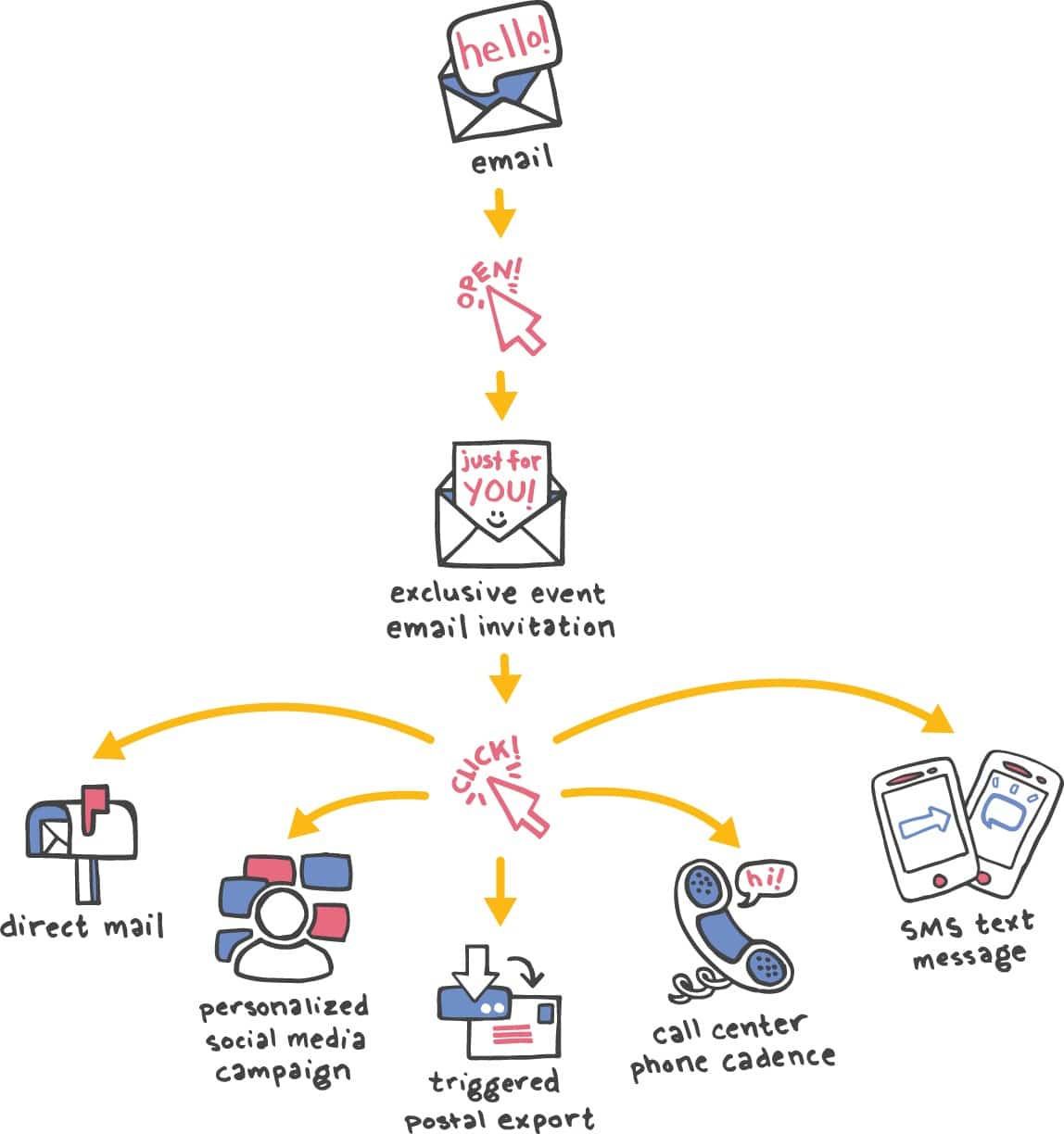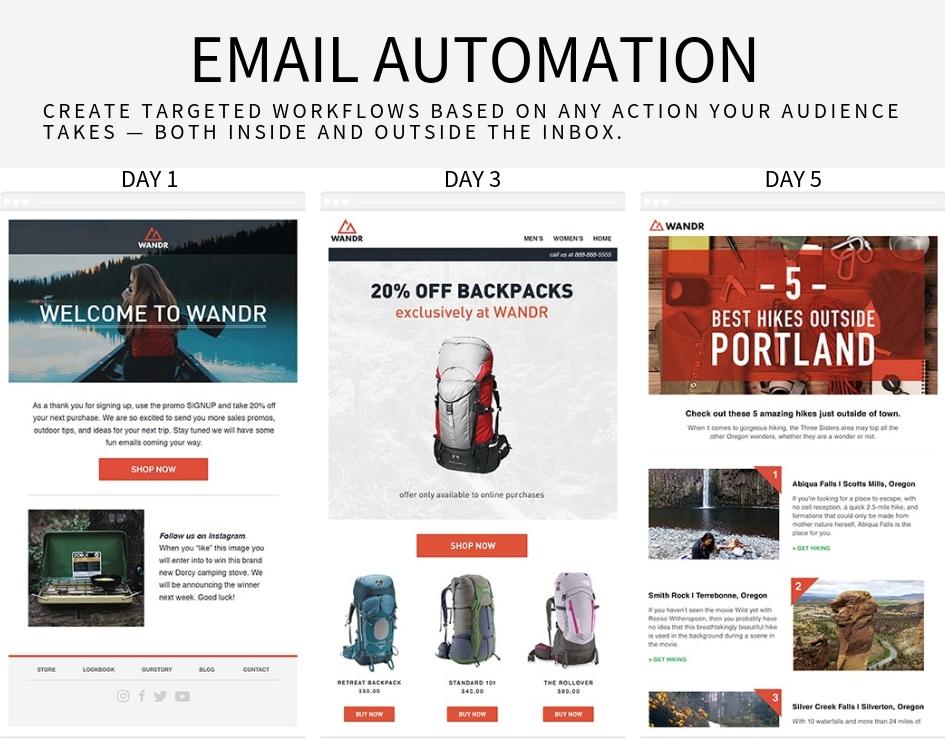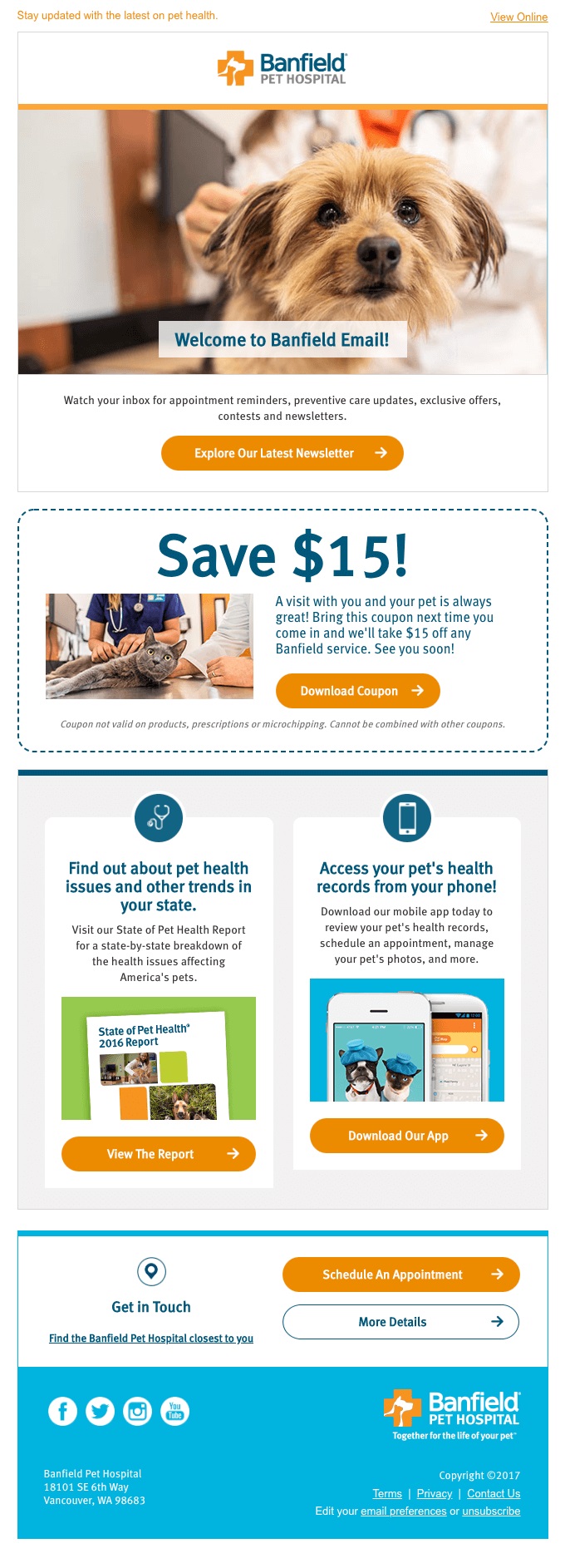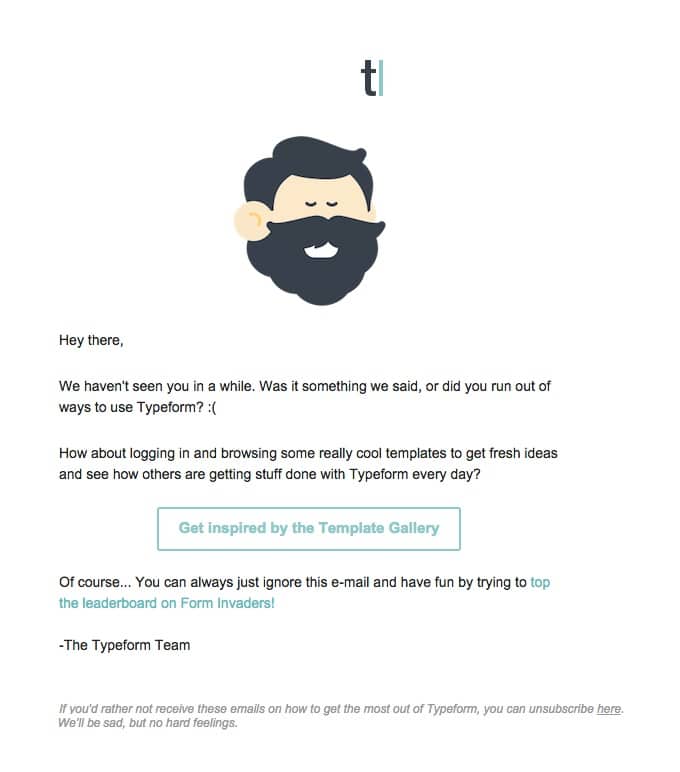How to create email drip campaigns that actually convert
While more and more businesses are attempting to move customer communications to social media, it’s still vital to keep email marketing strategy top of mind. While the average person will spend nearly two hours on social media every day, email conversion rates still outperform leading social media sites by 40-times.
This means that email campaigns are just as essential to the conversion process as ever, and that means carving out the time and creating the content to keep your subscribers engaged.
An automated email campaign is a brand’s best bet when it comes to converting subscribers to customers.
Why is that?
Automated emails get 152% higher click rates than a standard email.
Email automation is all about catching your subscribers when they’re ready to act, so having a proper campaign, such as a drip campaign, can help lead these subscribers down the appropriate funnel.
Before we move on, it’s essential to describe what a drip campaign is. While a “broadcast” email is a single email sent out to an email marketer’s subscribers list, a drip campaign is a pre-written, on-going campaign that helps to move email subscribers toward a conversion point.
A standard drip campaign looks something like this:
-
Welcome email – Digital marketers always want to welcome new subscribers. This also applies to those welcoming back users who’ve been inactive.
-
Special offer – These tend to be spread out over a few emails and include free materials such as tips and tricks subscribers can use in their daily life or work.
-
Special invitation – This is different from the special offers mentioned above. This is a special invitation to either make a limited time purchase at a discounted rate or something along these lines that help to move the subscriber towards a purchase of some sort.
Source: Delivra
How to approach an email drip campaign with conversions in mind.
Like with any other marketing effort, email drip campaigns need to drive your audience to take a specific action—make the conversion from prospect to customer.
Email automation is one of the best ways to put your drip campaign into action. Let’s face it, sending out individual broadcast emails to all your subscribers can be too much work. Automation takes a significant amount of the work and packages it all together into one excellent campaign that’s sent out in varying intervals, depending on your list segmentation.
Source: Emma
That being said, we’ve compiled a helpful guide of how to approach your email drip campaign with conversions in mind.
Identify your brand’s target audience.
The very first thing a brand’s marketing team needs to address is who’s the targeted audience. No matter how hard you may try, you can’t market to everyone all at once. So, who is it you’re trying to reach, what do they need, and how can you help them?
Define the campaign’s goal.
Yes, we know the ultimate goal for your drip campaign, but you want to define it further because you can’t determine if your campaign was successful or not if you don’t know what you are measuring. Defining this goal will also guide your email marketing team in deciding what type of email drip campaign that they should design. When establishing your campaign’s ultimate goals, ask yourself these questions:
-
Why do your subscribers care?
-
What action do you want your subscribers taking by the end?
-
How will you measure the success of this campaign?
Plan out the campaign.
Once you’ve answered the questions above, you’ll want to start planning out the campaign and the content that will be sent out.
First, how long will your campaign be? Will you measure this by a given number of emails? Will it be over the course of so many days or weeks?
Based on the audience members you are trying to reach and your ultimate goals for the campaign, this is when you’ll decide exactly what type of drip campaign you want to send out. Is this going to be your welcome series for new subscribers? Are you trying to re-engage inactive subscribers? This will guide your team when it comes to the content of each email.
You’ll also want to consider what information the target audience needs at this point in their journey. If they’re new subscribers, not only will you want to send a welcome email with a little about your brand, but also give them the opportunity to personalize their account so you can send them relevant information.
Hit send!
Believe it or not, one of the most challenging steps for many businesses, especially those just starting to build their subscriber lists, is hitting the send button.
Some email marketing teams feel a legitimate fear of sending their email campaigns for many reasons and often find themselves questions such as:
-
Is this the right content?
-
Is the email set up correctly?
-
Will the subscriber get the email?
-
Am I sending too many emails?
-
Will I see any results?
This is a rather short list of the reasons some marketers find themselves afraid of sending their email campaigns.
There are many ways to combat these fears, but if your team is working diligently, there is no real reason to be afraid to hit send.
So, take a deep breath and hit that button. You got this.
Evaluate & adjust accordingly.
The final step in creating a successful email drip campaign is to evaluate it and make any adjustments that may be needed.
There are many different metrics you’ll want to evaluate when it comes to determining whether a campaign was successful. These include the open rates of individual emails within the campaign, click through rates and even monitoring the number of unsubscribes.
One of the best ways a marketing team can test their campaign is to run A/B tests. These allow marketers to compare the performance of different elements of an email or a campaign as a whole. This is done by sending out a test batch of emails set up in one format to a list of subscribers while sending another formatting setup to the second batch of subscribers. Marketers will then judge which emails perform better based on the chosen metrics.
Remember, you want to be continually evaluating and readjusting to suit the needs of your readers. A welcome campaign that worked in 2014 isn’t going to work for 2019 necessarily.
Converting email drip campaigns: Tips all email marketers should know
When the goal is converting email drip campaign subscribers to customers, there are many tips out there to help when it comes down to creating the actual campaign. Below, we’ve compiled a short list of tips that’ll help your team create compelling campaigns that will see results.
Timing
The number one reason that subscribers unsubscribe from emails is that they’re merely receiving too many from a brand or organization. While you want to stay relevant in your subscriber’s life, you don’t want to bombard them with too many emails.
While some campaigns choose to do daily emails, others may decide to do a monthly newsletter. This is where testing and reevaluating your campaigns really comes into play. Testing the frequency of your emails will help you better judge your audience.
Test your audience and work to understand their wants and needs.
Personalization is key
This cannot be stressed enough—people respond better to emails and content that is personalized to them.
This can be done in a variety of different ways, including the simple name in the subject line that allows users the opportunity to select what types of emails they want to see in the future.

Source: Really Good Emails
Email drips need triggers
Triggers are actions that subscribers take to “trigger” the next email in the campaign. This will help guide your subscribers along their journey from the beginning interest through the purchasing process.
-
Opt-ins: These are great for getting new subscribers onto the list. This shows they want to be a part of your list and says they want to see more.
-
Click-throughs: These are links that guide your subscribers to specific things on your site. These can lead to purchases and downloads.
-
Purchases: Depending on your audience and the settings they have set up, they may request to be part of a list that suggests purchases based on their likes/views.
-
Downloads: Are you providing a service such as tips on blogging? Linking to a download on blogging topics is a great trigger showing you the interest in your subject.
3 email drip campaigns that will convert prospects into customers
Email drip campaigns come in some different forms. It all comes down to what the ultimate goal is for the campaign.
Below, we’ve compiled a quick list of excellent drip campaigns that provide value to the user, ensuring they’ll want to explore what the brand has to offer.
1. Welcome email drip campaigns
Welcome email drip campaigns are some of the most successful ones because they make subscribers aware that you appreciate their time. These emails are great for telling subscribers who you are and what you have to offer them.
Source: Really Good Emails
2. Re-engagement email drip campaigns
Re-engagement email drip campaigns are a fantastic way to reach out to your inactive subscribers. Remember, it’s more cost effective to attempt to re-engage inactive subscribers than it is to try and rebuild your list.
The aim here is to draw your audience back into what you have to offer. So don’t be afraid to provide something of value to them, such as a special offer or guide them to some of your new content.
Source: Really Good Emails
3. Milestone email drip campaigns
Milestone email drip campaigns are great because they show your subscribers that you’re paying close attention to their activities.
This Starbucks email not only reminds the subscriber of their current rewards points but tells them to use them so they can treat themselves.
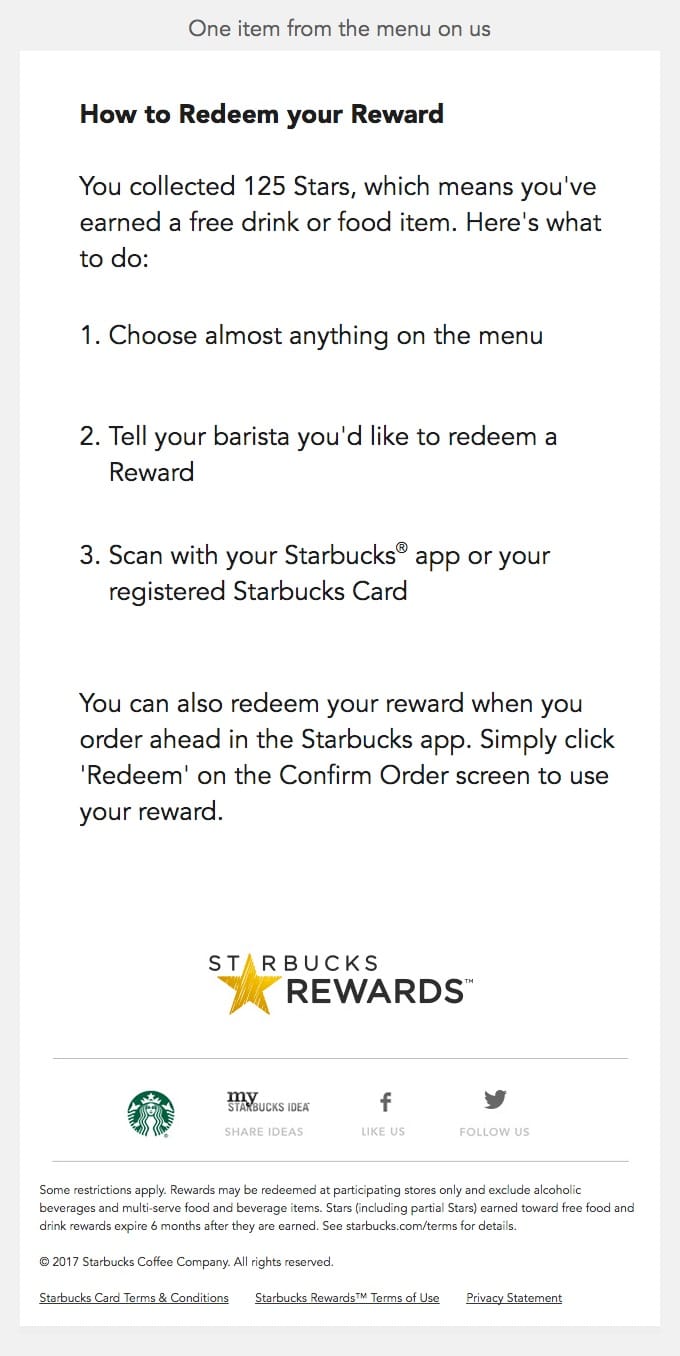
Source: Really Good Emails
Wrap up
Converting email drip campaigns comes down to how you are addressing your targeted audience. These campaigns can help not only build but re-engage your subscriber's list, so they’re very worth your while to invest your time.
Remember, when creating these campaigns, keep these quick tips in mind:
-
Timing
-
Personalization
-
Use relevant triggers
-
Keep It Simple
MOST RECENT ARTICLES
Want to engage your audience and grow your brand? Try Emma's robust easy-to-use product today.

